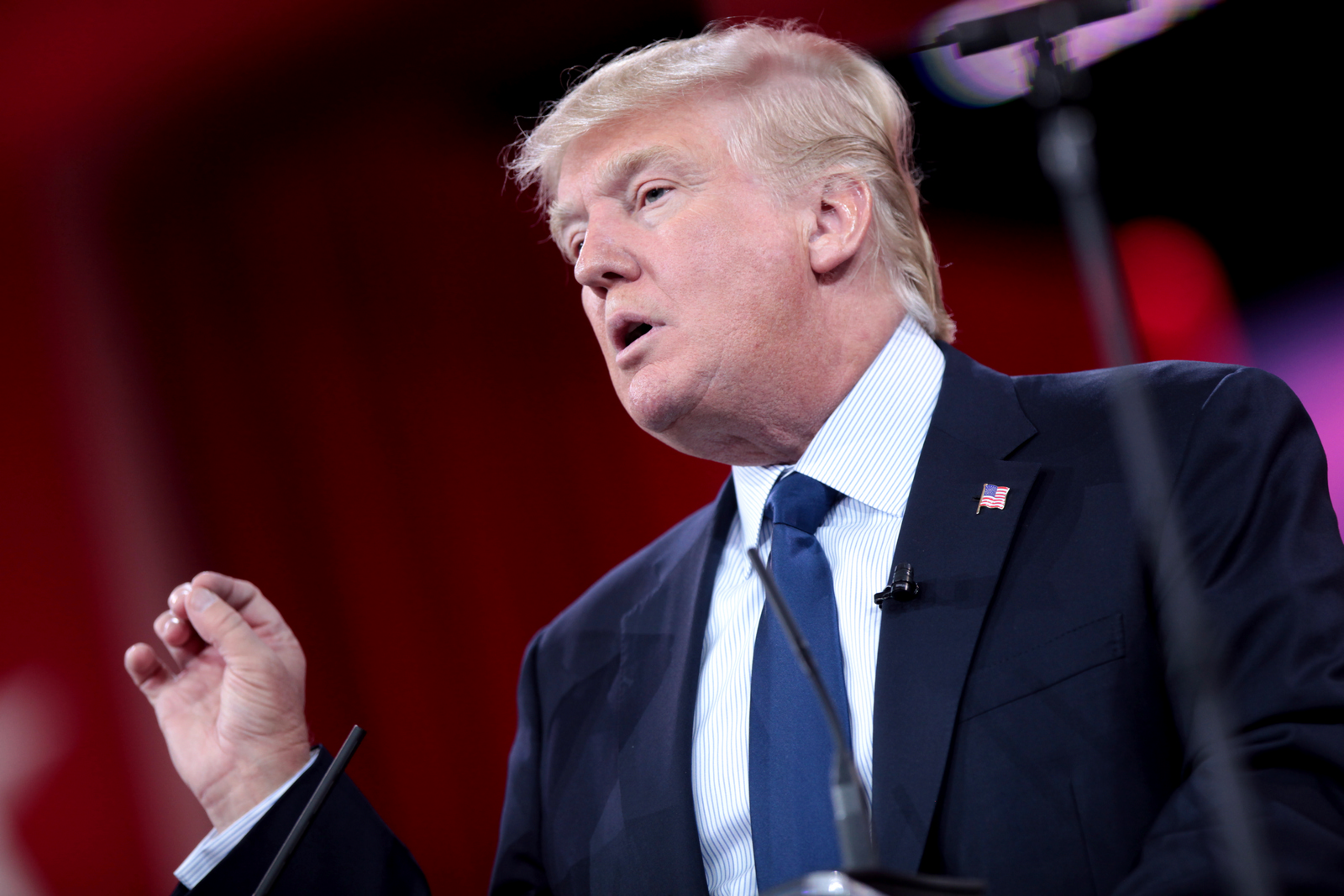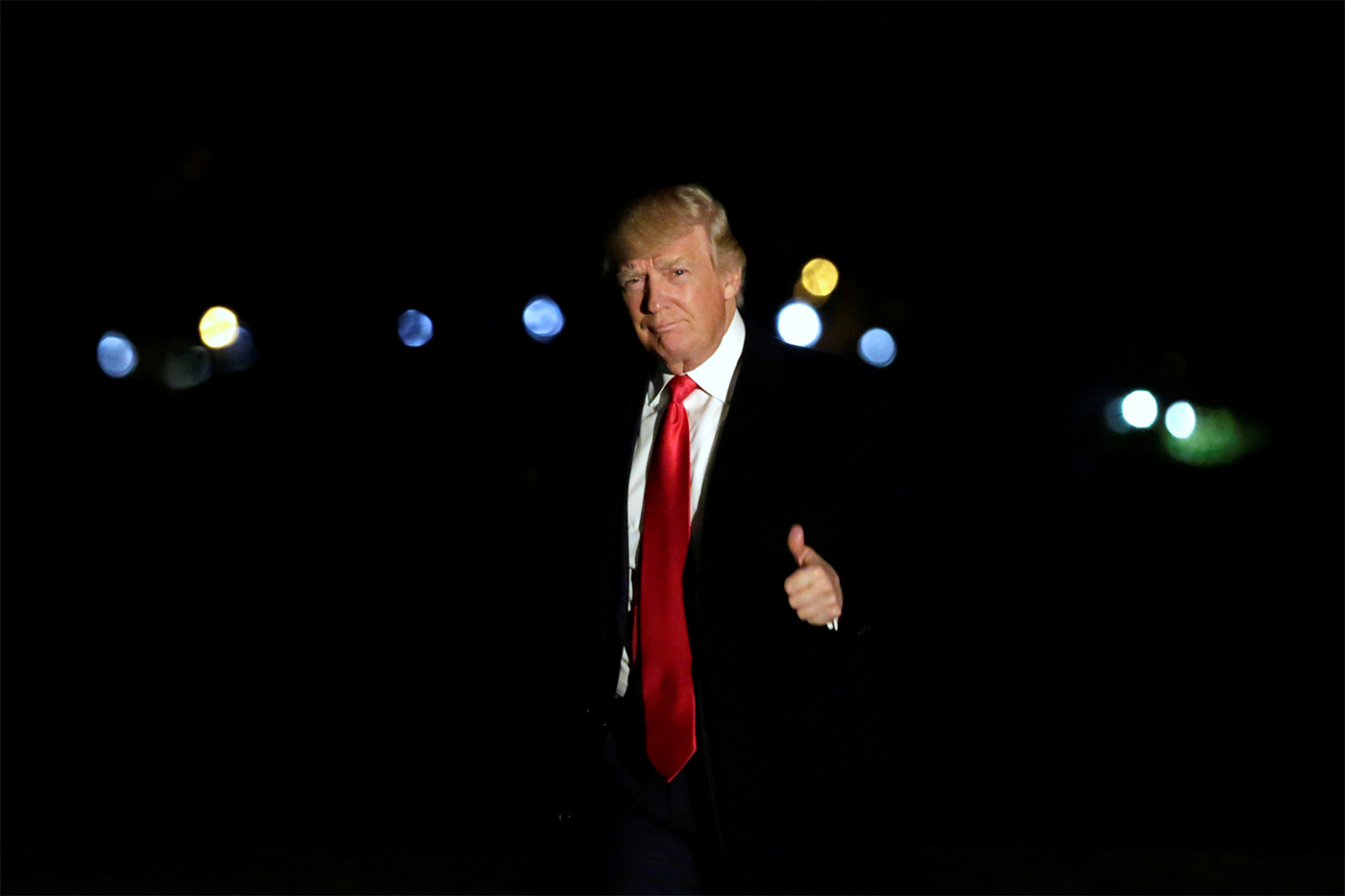Donald Trump has begun his presidential term in a more active way than his predecessor, Barack Obama, did. He has already issued more than 20 presidential executive orders and memorandums, and all of them are as controversial as the 45th US president is himself. Among them all the executive order “Border Security and Immigration Enforcement Improvements” stands out, which literally divided America.
To understand how seriously this decree has excited the public of both the United States and many other countries of the world, it is enough just to look at the statements of the Prime Minister of Canada Justin Trudeau on his country's readiness to accept migrants, regardless of their faith, or those of the Great Britain’s Prime Minister Theresa May, who “agreed with the approach” of the United States. But D. Trump made it clear all along that immigration reform during his presidency is unavoidable. While still a candidate for US President, Trump formulated ten steps according to which he intended to solve the “immigration crisis in the United States.” And he began to implement almost all of them within the first week of his presidency.
But why, of all the President’s current initiatives, is the immigration policy the most acutely perceived? And does D. Trump have a legal right to issue such decrees? As they say, the devil is in the detail.
For a start, one should turn to the statistical data. According to the analysis of the Migration Policy Institute, Mexicans have been making up about a quarter of all immigrants since 1990 to the present. With regard to legal immigrants, as of 2015 the share of Mexicans reached 26.9% of the total number of immigrants, or 11,643,000 people. Incidentally, Mexicans are the biggest ethnic group that is classified as an “ethnic minority”. The US Department of Homeland Security presents some interesting data on illegal immigrants. As part of the annual "Report on violations during the crossing of the border" and "Report on enforcement operations to expel illegals crossing the border", the following figures can be found. In 2013, 434 thousand people were deported, while in 2014 that number decreased to 407 thousand, and in 2015 amounted to 333 thousand. At the same time, the number of Mexicans decreased too: 310 thousand in 2013 vs 242 thousand in 2015.
For what purpose were these figures given? For the purpose of showing that the administration of the current President is prevaricating by saying that the number of illegal immigrants, and the number of US border violators in general, especially from Mexico, is growing exponentially. Yes, the percentage of Mexicans has increased. But this is if the sum of the total number of those already living legally in the United States is taken into account. And this is due more to the fact that this ethnic group has its own well-established standards, including a large number of children. Against this background, D. Trump’s statements on limiting federal funds for “sanctuary cities” do not look quite appropriate. This refers to those metropolitan areas that give shelter to refugees and / or illegal immigrants, providing and assuring them some assistance (this includes, in particular, Los Angeles and Chicago). While there is no exact figure on the number of illegal immigrants, the Migration Policy Institute, based on a large number of processed formal and informal data, cites a figure of 11 million people. The largest “sanctuary cities” are believed to be the metropolises of California, which “sheltered” about 3 million people. But it is important to know that not all of them are Mexicans. There are also quite a number of Chinese people and immigrants from the Middle East.
It is also important to note the fact that D. Trump is not the first President in US history who ideates the erection of a wall to combat the illegal entry into the territory of the United States of foreigners – especially Mexicans. Democratic President Bill Clinton, oddly enough, was the first to implement this concept in the framework of several special operations of U.S. Customs and Border Protection back in 1994. The main objective was to reduce the number of people associated with the criminal underworld, who were trying to cross the border in the south of the United States, primarily California. As a result of the successful completion of operations, it was decided to leave special barriers erected for this task. The next step in the construction of a “wall” along the US southern border became the “Secure Fence Act of 2006”, signed by George Bush Jr. As part of this presidential decree, the length of the border facilities increased by more than 1,000 kilometers, and the Border Guard Service received more samples of equipment and special means for catching illegal immigrants and border protection. In other words, D. Trump will not build a wall from scratch, but rather order to modify and enhance existing facilities along the US-Mexican border.
Most interestingly is that according to data from the Department of Homeland Security, citizens of the so-called “Northern Triangle” of Latin America (El Salvador, Honduras and Guatemala) penetrating through to US states along the border with Mexico have continued to increase. That is, Mexico is itself no longer a major source of illegal immigrants to the United States, but rather a sort of “staging post” for citizens of the poor Latin America states. That is why, when Trump and his supporters lay the blame only on the Mexicans, they unwittingly state an inaccuracy that results in a growing number of those within the United States who are dissatisfied with this error.
But the construction of the wall and the fight against illegal immigrants in the south of the United States is only part of the problem. The executive order “Protecting the Nation from Foreign Terrorist Entry into the United States” has perhaps become the most criticized of Trump’s decrees. The most contentious point in the text of the document was point C of section 5, which states that “the entry of nationals of Syria as refugees is detrimental to the interests of the United States and thus suspend any such entry.” The list of countries also hit Yemen, Somalia, Sudan, Libya, Iran, and Iraq. However, the right of entry may be returned after 90 days. In addition, Trump has set a quota on the total number of refugees who can seek asylum in the United States, in the amount of 50 thousand people (by the way, according to data from the Department of Homeland Security, in 2015 almost 70 thousand people came into the US). This was the reason why the head of the White House was attacked by ethnic and other minorities, already naturalized immigrants (mostly from Middle Eastern countries), as well as human rights and youth protection organizations. Their main argument is that D. Trump has no constitutional right to sign such decrees and memorandums. Moreover, a federal district judge in New York, Judge Ann Donnelly, satisfied the petition of the American Civil Liberties Union to suspend the presidential decree and prohibit any deportation, which “can cause harm to those who return to their home countries against their will.” The question arises: Does Donald Trump have the right to sign such decrees? Let us refer to the history of the question.
In 1924 the “Immigration Act of 1924” was adopted in the United States, according to which stringent requirements for those who wanted to become US citizens, or get asylum in the US, had been set. According to the document, quotas were introduced on entry for citizens of Southern and Eastern Europe, and most of the inhabitants of Asia were completely prohibited from entering. This was the first large-scale attempt to limit immigration to the United States. Then, in 1952, the above-mentioned law was revised and the “Immigration and Nationality Act of 1952” was adopted. The document razed the prohibition on the entry of Asian citizens, however, it introduced even more stringent requirements for candidates to enter the country and introduced the category of “undesirable aliens”, which could fall upon anyone who would promote communist ideas or threaten US interests through their views and way of life. It is noteworthy that the then US President Harry Truman strongly opposed this legislation and even vetoed it, but the document was still passed by Congress (through the system of checks and balances). This law is important to analyze the legitimacy of decrees on immigration adopted by D. Trump. The text stated that in respect of persons applying for citizenship or asylum, “special measures and limitations may be applied... in accordance with the rules and regulations as the President deems necessary.” This paragraph has not been modified in subsequent versions of the Immigration Act. In other words, this provision is still in effect, and the US President has the right to impose the restrictions on entry into the country for immigrants and refugees according to what he deems are the interests of the United States.
In response to criticism of the policies of his administration, D. Trump recalled the actions of B. Obama, who in 2011 suspended the issuance of entry permits to refugees from Iraq after two terrorists – refugees from Iraq – were found in a small town in Kentucky. Large-scale checks of all Iraqi refugees, which lasted six months, began, after which the restrictions were lifted. Fairness requires me to say that Obama has limited the authorizations only for attaining refugee status, but not immigrant visas as such.
On February 28th of this year during his first speech before the members of both houses of Congress, Donald Trump also brought up the issue of immigration reform. “I believe that real and positive immigration reform is possible, as long as we focus on the following goals: To improve jobs and wages for Americans; to strengthen our nation's security; and to restore respect for our laws” –Trump said during his speech. It is interesting that on the eve of the first address to Congress, Trump let it slip that illegal immigrants who have no criminal records, have the right to stay in the United States. This statement immediately caused a storm of interest in his impending speech and sowed among critics of the 45th President the hope that he would change his attitude towards the problem of illegal immigration. However, during the speech, it became clear that no fundamental change in the Trump policy should be expected. In addition, as guests of honor, he invited to Congress relatives of victims killed specifically by illegal immigrants. Thus, he stressed that the issue of allowing illegal immigrants to stay or even enter the country is inadmissible and out of question in his agenda. Trump has once again pointed out that “by finally enforcing our immigration laws, we will raise wages, help the unemployed, save billions of dollars, and make our communities safer for everyone.”
Despite all the criticism of his immigration decree, on March 6 th Trump issued a new, updated version of the executive order on “Protecting The Nation From Foreign Terrorist Entry Into The United States.” The head of the White House seems to be trying to justify himself before his opponents, detailing as much as possible why these countries were included, and not others. It is interesting that Iraq is now crossed out from the original 7 countries (apparently due to the data on the successes of the Western coalition against ISIS), and Syrian refugees are now not allowed to enter the US temporarily, not permanently (Syrians of all faiths, not only Muslims). In addition, those who have already received the right to enter the United States cannot be declined entrance. One of the main innovations was the absence of a column declaring the immediate entry into force of the executive order from the moment of signature. For the first time, the authorities were not quite ready for restrictive measures of this magnitude, which resulted in collapses at many airports and checkpoints. Now, the border guards and other special services have 10 days until the new executive order comes into force, more precisely until March 16 th .
The protests will go on. Moreover, they will continue as long as the immigration issues are there on the agenda of any administration, whether Democratic or Republican. After all, no one has repealed the eternal debate between the conservatives seeking to best protect the borders of the state and the liberals concerned about respect for the rights and freedoms of all citizens. But for now, the immigration issue has divided this nation of immigrants as never before.







